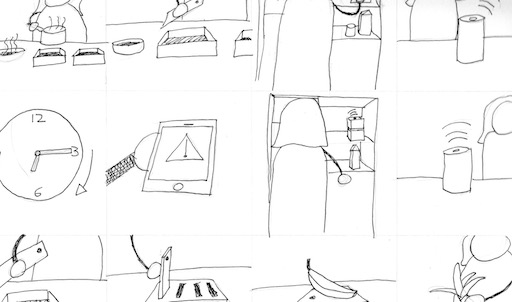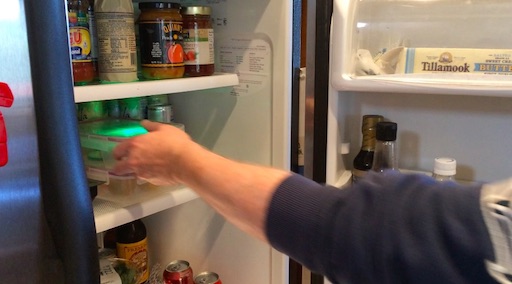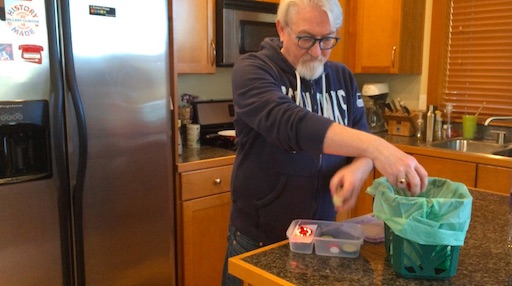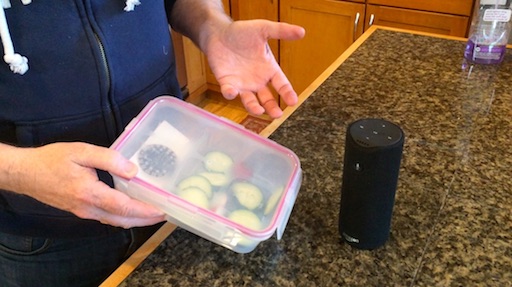Smart Food Containers
IoT Video Sketch Mockup
The Story
As part of my User Centered Design certificate coursework, I created a video sketch showing scenarios for a smart food container. I implemented a prop container used in the video with a small programmable microcontroller. I was responsible for all parts of this project.
Design process
- Ideation
- Sketches / Storyboarding
- Presentation and group critique
- Low fidelity video sketch (animatic)
- Iteration of design
- Filming and high fidelity video sketch
Ideation
The issue of food waste interested me personally and I researched demographics that would be most sensitive to the problem. I considered older people who may be on a fixed budget and learned about age-related memory degradation.
This was a target audience who could benefit from the introduction of an IOT device if the interface was streamlined.
Sketches / Storyboarding
The physical manifestation of the device did not concern me as much as the interactions with it, so I began sketching storyboards.
Detail of storyboard sketch |
 |
|
Feedback from the group critique:
- Spend more time introducing the persona portrayed in the video and explaining their needs.
- Preventing food spoilage is a compelling scenario for all users.
Iteration of design
I removed a scenario involving an intelligent fruit bowl and replaced it with a scenario about food spoilage. I also added more description of the reasons why seniors may face challenges with food waste.
Low fidelity video sketch (animatic)
After adjusting my design, I created a animatic video with the audio of my script. The visuals relied heavily on the existing storyboard assets so that I could focus on the wording and sequencing of the video.
This rough draft can be found here (2m 6s).
Filming and high fidelity video sketch
Filming was done at a friends house using my iPhone’s video recording capability. Audio was recorded separately (non-sync audio) to simplify editing. I made sure to capture B-roll to use while the narration introduced the persona and explained the design’s context.
Container being retrieved from the refrigerator |
 |
|
Challenges in the Design
- How does the user inform the system of the contents of a container?
- How does the user then later query the system for the contents of a container?
I decided the most natural way to “select” a container in the system was to hold it as if showing it to the voice assistant. This interaction mimicked the traditional query between two people in the kitchen.
Person A (holding a food container) What’s in this box?
Person B I think that’s left overs from last night.
The reverse operation of informing the system of a container’s contents is the interaction in reverse.
Person A (holding a food container) I’m putting the left overs in this Tupperware.
Person B Ok!
Launch / Results
- The final video (2m 13s) was presented to class.
- The project received full marks.
Artifacts
- Video Sketch of Design (2m 13s)
A container whose contents of spoiled |
 |
|
Reflection / Retrospective
I found the video sketch to be an effective way to convey a design in context. A video sketch would be a poor fit for communicating the design of a website, but worked very well for an IOT design.
The prototyped LED indicator helped sell the interface and took a short time to implement. In the future, I’d like to try some other simple electronics projects to mock-up device interface.
From ideation to completion of the final edited video took the equivalent of a full week’s of work. I think this could be shorted to about three days, opening the possibility of producing two video sketches a week. A longer project could also build a collection of suitable stock footage to repurpose in later iterations.
